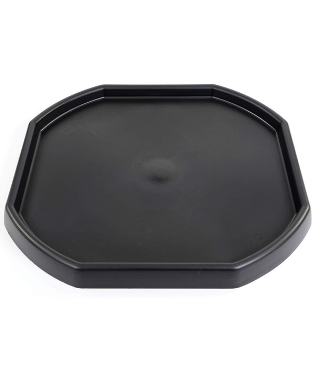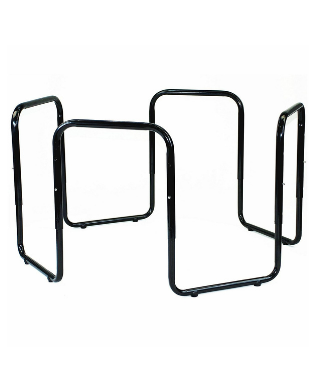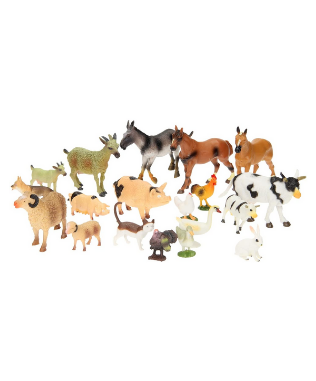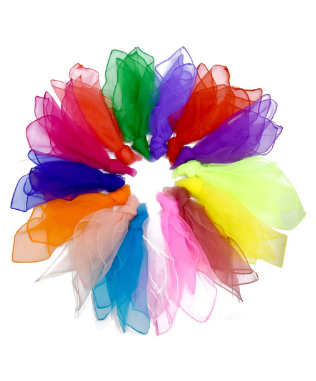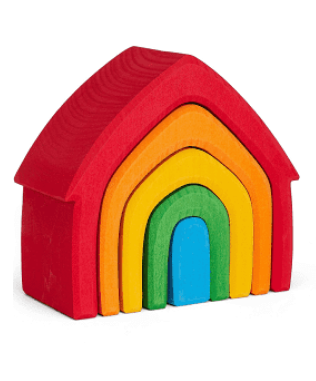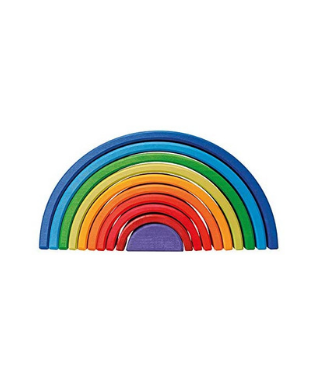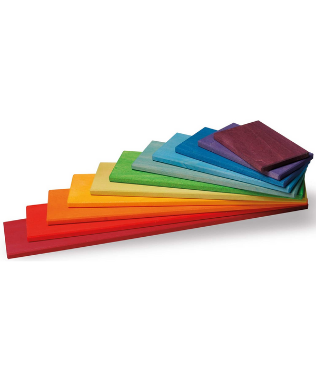Cian loves this song. We have to sing it on the school run in the morning and afternoon, so his big brothers were very excited to set a tray up for him.
Resources
- Tuff tray
- Farm animals
- Grimm’s house
- Grimm’s rainbow
- Grimm’s building boards
- Circus scarves
- Tractors
Method
Old MacDonald had a farm…
First, Cian chose the dog to sing about. Cian, who is 2 years and 3 months old, is a very reluctant talker. But nursery rhymes are a good way to encourage him to use his language. We sing most of the song, leaving some of the words out, for him to fill in. As he gets more confident, we will leave more and more words out, until he’s singing the song by himself.
The first time through, we all sang, “Old MacDonald had a farm, _! And on that farm he had a _. Ee i ee i oh! With a _ _ here and a _ _ there. Here a _, there a _, everywhere a _ _. Old MacDonald had a farm, _!”
So, the only words cian had to fill in were, “Ee i ee i oh!”, “dog” and “woof woof”.
Next up was the chicken.This time we sang, “Old MacDonald had a farm, _! And on that farm he had a _. Ee i ee i oh! With a _ _ _ and a _ _ _. Here a _, there a _, everywhere a cluck cluck. Old MacDonald had a farm, _!”
This meant Cian now added the word “here” to the song.
For the horse, we sang, “Old MacDonald had a farm, _! And on that farm he had a _. Ee i ee i oh! With a _ _ _ and a _ _ _. _ _ _, _ _ _, _ _ _ _. Old MacDonald had a farm, _!”
Now Cian was attempting the “Here a neigh, there a neigh, everywhere a neigh neigh”.
We had a break from singing to let him play with the toy animals, the cheeky duck kept chasing the cow.
On to the cow, where we sang, “Old MacDonald had a _! And on that farm he had a _. Ee i ee i oh! With a…”
This time Cian added in the word, “farm” as well as finishing off the song.
We kept checking if Cian wanted o carry on singing and he told us, “More!”. We started the song, but then the pig got a bit hungry.
We started singing about the donkey, but soon got distracted with letters. Cian won’t let us walk past a road sign without pointing to all the letters on it, which is why our walk to school can take a while. Especially if we accidentally walk past a sign and forget to point the letters out, he insists on going back to it.
Today though, there were tractors to try and fit through tunnels.
























The sheep had a go at driving the combine harvester. As he was playing he started singing, “Baa Baa Black Sheep”.
Both big brothers decided to join in with the small world play. When Finny’s pig decided to do some big jumps, Cian’s sheep decided to join in.
The pictures below sum up learning as the youngest sibling. He observes his brothers’ play, figures out what is involved, then joins in.
Luckily, Ioan is a very patient big brother.









The donkey and horse couldn’t fit on the red tractor, so Ioan thought they could take it in turns to give each other a piggy back when they got tired.
Finny’s poor pig got an ‘A’ stuck on his head, then found himself on a flying bed!
The beauty of open ended play, is that a simple tray can provide endless play opportunities for a seven, five and two year old alike.
DfES Outcomes for EYFS (2013)
Communication and language
Listening and attention (16 to 26 months)
- Listens to and enjoys rhythmic patterns in rhymes and stories.
- Enjoys rhymes and demonstrates listening by trying to join in with actions or vocalisations.
- Selects familiar objects by name and will go and find objects when asked, or identify objects from a group.
- Understands simple sentences (e.g. ‘Throw the ball’.)
Listening and attention (22 to 36 months)
- Shows interest in play with sounds, songs and rhymes.
Listening and attention (30 to 50 months)
- Listens to others one to one or in small groups, when conversation interests them.
- Listens to stories with increasing attention and recall.
- Joins in with repeated refrains and anticipates key events and phrases in rhyme and enjoys rhythmic patterns in rhymes and stories.
- Is able to follow directions (if not intently focused on own choice of activity).
Understanding (22 to 36 months)
- Developing understanding of simple concepts (e.g. big/litltle).
Speaking (16 to 26 months)
- Copies familiar expressions, e.g. ‘Oh dear’, ‘All gone’.
Speaking (22 to 36 months)
- Learns new words very rapidly and is able to use them in communicating.
- Uses gestures, sometimes with limited talk, e.g. reaches towards toy, saying ‘I have it’.
Physical Development
Moving and handling (8 to 20 months)
- Passes toys from one hand to the other.
Personal, social and emotional development
Self-confidence and self-awareness (16 to 26 months)
- Gradually able to engage in pretend play with toys (supports children to understand their own thinking may be different from others).
Making relationships (16 to 26 months)
- Plays alongside others.
- Plays cooperatively with a familiar family member, e.g. rolling a ball back and forth.
Making relationships (22 to 36 months)
- Interested in others’ play and starting to join in.
- Seeks out others to share experiences.
- Shows affection and concern for people who are special to them.
- May form a special friendship with another child.










